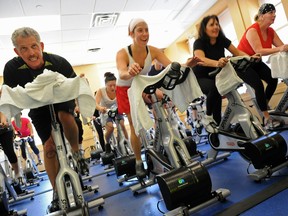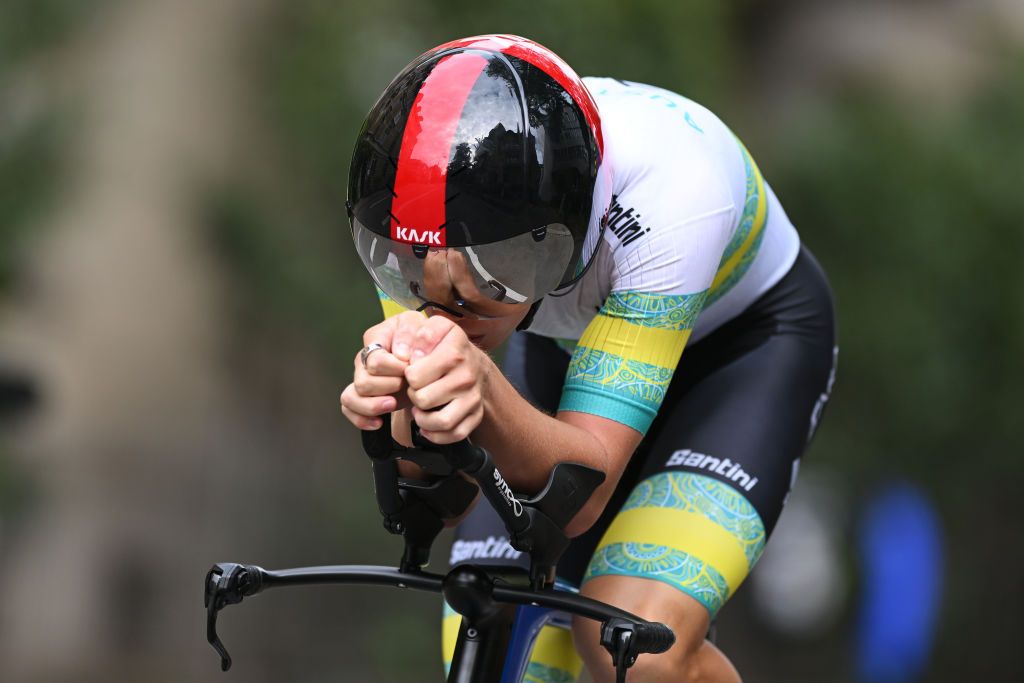Postmedia may earn an affiliate commission from purchases made through our links on this page.
Fitness
Fitness: Find right balance between pleasure and pain when you exercise

No matter who’s exercising, the closer the workout comes to requiring maximum effort the more unpleasant the exerciser feels.
Article content
For some people, exercise requires too much effort. Others believe it isn’t exercise unless their physical limits are being pushed. This love/hate relationship with effort often marks the dividing line between exercisers and non-exercisers. It’s also the theme of numerous studies exploring how effort can be manipulated to be less of an exercise deterrent.
Advertisement 2
Article content
No matter who’s exercising, the closer the workout comes to requiring maximum effort the more unpleasant the exerciser feels. Workouts that stay in a more moderate zone generally elicit more enjoyment, though the line between when a workout goes from feeling good to feeling uncomfortable varies considerably between individuals.
Article content
Some people maintain a level of intensity that never creeps into the zone where there’s more pain than pleasure. But most exercisers opt for a gradual rise in intensity until it takes effort to maintain the pace, then try keeping it there to the end of the workout.
Also popular is interval training where intensity peaks for short periods of time followed by equally short periods of recovery. This ebb-and-flow style of workout has been billed as more palatable for those who find it difficult to sustain longer bouts of constant effort, though the jury’s out as to whether steady state or interval training are more palatable for people trying to make exercise a habit.
The trouble is, when it comes to evaluating enjoyment during exercise, there’s a distinct difference in feedback depending on when the exerciser is polled. Remembered pleasure or displeasure is distinctly different from feelings elicited during a workout. The longer the gap between the end of the workout and when the exerciser reports their feelings, the more favourable they view the workout.
Advertisement 3
Article content
Still, no matter how much time modifies our feelings, some things we don’t forget. Studies suggest the more unpleasant the workout, the less likely we are to go back for more. There is a caveat, however. Researchers studying how enjoyment factors into exercise adherence have noted a difference between recreational exercisers and athletes. With goal-based athletes, bouts of extreme exertion are associated with accomplishment, which alters their outlook not just on the importance of enjoyment during a bout of exercise but also on how they rate enjoyment post-workout. With this crowd, the idea that exercise has to hurt to be beneficial is ingrained into their psyche.
For everyone else, the slope of exercise enjoyment within a single workout is worthy of study. Is there a way to manipulate the timing of pleasure so that we end workouts feeling on a high versus physically wrung out? And will that feeling of pleasure make the next workout less intimidating and therefore more likely to happen?
There’s some research suggesting that instead of focusing on increasing or maintaining intensity, a workout should end easier than it started. Others recommend easing into effort and finishing with purpose. Then there’s the pyramid format that starts off at a comfortable intensity, increases to maximum effort midway and ramps down again as the workout winds down. Each format has its pros and cons, with results inconclusive as to whether one design is more enjoyable than others.
Advertisement 4
Article content
Adding to the body of evidence is a recent study published in Psychology of Sport and Exercise reviewing what the researchers call the “slope of pleasure” and its effects on remembered pleasure, forecasted pleasure and enjoyment. The researchers from California State University in Bakersfield theorized that the optimal slope of pleasure occurred when exercisers experienced a gradual increase and then decrease in effort, versus an ascending (the workout gets harder, with peak effort occurring toward the end of the workout) or descending (the workout ramps up in intensity quickly then eases off to finish easier than it started) slope. The idea was to see whether a less intense start or finish was more enjoyable.
To make sure all workouts were similar in volume and overall intensity, they all started with a two-minute warmup followed by 30 minutes of continuous exercise and a 10-minute recovery. All protocols were matched in overall effort with about 20 minutes of exercise at a moderately hard intensity and 10 minutes at or around peak effort.
The ascending slope increased intensity by 2.5 per cent every two minutes while the descending workout decreased intensity by 2.5 per cent every two minutes. The ascending/descending protocol increased intensity by 2.5 per cent every two minutes, then at the midpoint started decreasing effort by 2.5 minutes. Enjoyment was polled before exercise, every five minutes during exercise and 10 minutes after exercise.
Advertisement 5
Article content
Only the ascending workout changed the level of enjoyment over the course of the workout with exercisers feeling worse when intensity continually increased. The other workouts, both of which featured a decrease in intensity, noted no change in enjoyment from the start to the end of the workout.
These results disproved the researchers’ hypotheses, who thought enjoyment would increase as intensity level dropped. It also differed from previous research reporting that a decrease in intensity resulted in greater exercise enjoyment, including greater remembered pleasure, than workouts that got increasingly harder.
But the takeaway for the average exerciser isn’t that the results weren’t as forecasted. Instead, the idea that intensity can be manipulated to provide a more enjoyable workout is worthy of notice.
Also important to highlight is that individuals have very different preferences about when during a workout intensity ramps up and when it starts receding.
If you’re naturally slow out of the gate, consider these results permission to take your time before ramping up intensity. And if you start off strong but fade down the stretch, go ahead and coast into the finish line. Stop fighting against your natural inclination to take the path of least resistance and lead your workouts by what makes you feel good rather than someone else’s idea of the ideal workout plan.
Recommended from Editorial
Advertisement 6
Article content
Article content








/cdn.vox-cdn.com/uploads/chorus_asset/file/24435784/tokyostrava.jpg)


